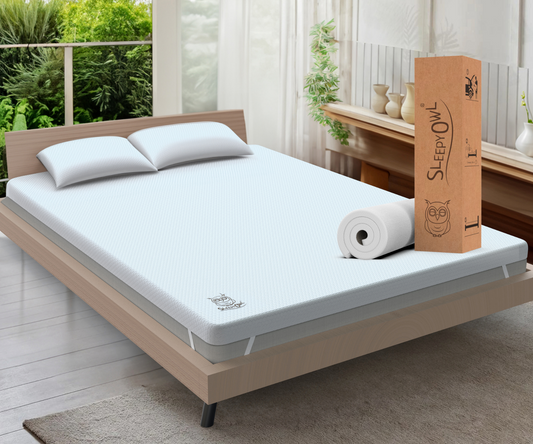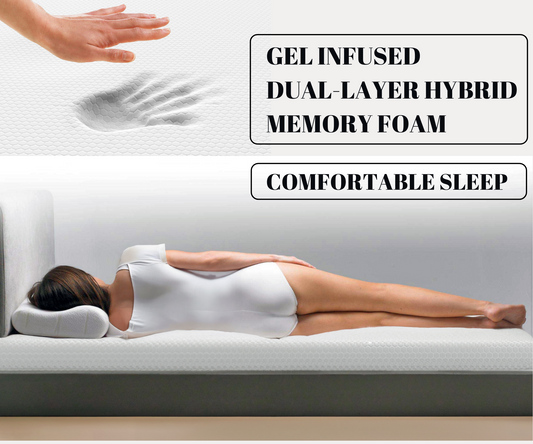The effects of a dark room on quality sleep
Quality sleep is a cornerstone of overall health and well-being, influencing everything from cognitive function to emotional stability. In our fast-paced world, where the demands of work, family, and social obligations often encroach upon our rest, the significance of a good night's sleep can be easily overlooked. However, research consistently underscores that sleep is not merely a passive state of rest; it is an active process that plays a critical role in physical health, mental clarity, and emotional resilience.
The National Sleep Foundation recommends that adults aim for seven to nine hours of sleep per night, yet many struggle to meet this benchmark due to various lifestyle factors and environmental influences. The quality of sleep is just as important as the quantity. Sleep quality refers to how well one sleeps, encompassing factors such as how long it takes to fall asleep, how often one wakes during the night, and how rested one feels upon waking.
Poor sleep quality can lead to a myriad of health issues, including obesity, diabetes, cardiovascular disease, and mental health disorders like anxiety and depression. Therefore, understanding the elements that contribute to quality sleep is essential for anyone looking to improve their overall health and well-being. Check out this amazing Memory Foam Mattress Topper for a better night's sleep.
The impact of a dark room on melatonin production
Melatonin, often referred to as the "sleep hormone," plays a pivotal role in regulating the sleep-wake cycle. Produced by the pineal gland in response to darkness, melatonin levels typically rise in the evening as natural light diminishes, signaling to the body that it is time to prepare for sleep. Conversely, exposure to light—especially blue light emitted by screens—can inhibit melatonin production, making it more difficult to fall asleep and stay asleep.
This biological response underscores the importance of a dark sleeping environment in promoting healthy melatonin levels. In a dark room, the body can produce melatonin more efficiently, leading to a smoother transition into sleep. Studies have shown that even small amounts of light can disrupt melatonin secretion, which can subsequently affect sleep quality.
For instance, research published in the Journal of Clinical Endocrinology & Metabolism found that participants exposed to light during the night experienced significant reductions in melatonin levels compared to those who slept in complete darkness. This highlights the critical need for a dark environment to facilitate optimal melatonin production and enhance overall sleep quality.
How a dark room enhances the body's natural sleep-wake cycle
The body's natural sleep-wake cycle, known as the circadian rhythm, is intricately linked to environmental cues such as light and darkness. This internal clock regulates various physiological processes, including hormone release, body temperature, and metabolism. A dark room supports this rhythm by reinforcing the signals that indicate it is time for rest.
When the body perceives darkness, it triggers a cascade of hormonal changes that promote relaxation and prepare the body for sleep. Moreover, maintaining a consistent sleep schedule in conjunction with a dark environment can further strengthen the circadian rhythm. When individuals go to bed and wake up at the same time each day, their bodies become attuned to these patterns, making it easier to fall asleep and wake up naturally.
A dark room not only aids in this process but also minimizes disruptions from external light sources that could otherwise throw off the body's internal clock. This synergy between darkness and routine fosters a more restorative sleep experience.
The role of a memory foam mattress topper in promoting comfort and support
While creating a dark environment is crucial for quality sleep, the physical comfort of one's sleeping surface cannot be overlooked. A memory foam mattress topper can significantly enhance sleep quality by providing additional support and comfort tailored to individual needs. Memory foam is designed to contour to the body's shape, distributing weight evenly and alleviating pressure points that can lead to discomfort during the night.
For individuals who experience back pain or joint discomfort, a memory foam topper can be particularly beneficial. It helps maintain proper spinal alignment by supporting the natural curvature of the spine while also cushioning areas that may be prone to pressure. This level of support can lead to fewer disturbances during the night, allowing for longer periods of uninterrupted sleep.
Furthermore, memory foam is known for its motion isolation properties; couples sharing a bed can benefit from reduced disturbances caused by each other's movements.
The connection between a dark room and improved sleep quality
The relationship between a dark room and improved sleep quality is well-documented in scientific literature. Studies have shown that individuals who sleep in darker environments report better overall sleep satisfaction compared to those who are exposed to light during the night. For example, research published in Sleep Medicine Reviews indicates that light exposure at night can lead to increased wakefulness and decreased total sleep time.
Additionally, improved sleep quality in dark environments is often associated with deeper stages of sleep, such as slow-wave sleep (SWS) and rapid eye movement (REM) sleep. These stages are crucial for physical restoration and cognitive function. SWS is particularly important for bodily recovery and growth, while REM sleep plays a vital role in memory consolidation and emotional regulation.
By fostering an environment conducive to darkness, individuals can enhance their chances of experiencing these restorative stages of sleep.
Tips for creating a dark sleep environment
Creating an optimal dark sleeping environment involves several practical steps that can significantly enhance one's ability to fall asleep and stay asleep throughout the night. First and foremost, consider investing in blackout curtains or shades that effectively block out external light sources from streetlights or early morning sunrises. These window treatments can create a cocoon-like atmosphere that promotes relaxation.
In addition to window coverings, it is essential to minimize any sources of artificial light within the bedroom itself. This includes turning off electronic devices such as televisions, computers, and smartphones at least an hour before bedtime. The blue light emitted by these devices can interfere with melatonin production and disrupt the body's natural inclination toward sleep.
For those who require some form of light during the night—such as for navigating the space—consider using dim red lights or nightlights designed specifically for this purpose.
The benefits of investing in blackout curtains or blinds
Investing in blackout curtains or blinds offers numerous advantages beyond simply blocking out light. These window treatments can also help regulate temperature within the bedroom by insulating against heat during warmer months and retaining warmth during colder seasons. This temperature control contributes to a more comfortable sleeping environment, which is essential for achieving quality rest.
Moreover, blackout curtains can enhance privacy by preventing outside observers from seeing into your space. This added layer of security can foster a sense of safety and relaxation that further promotes restful sleep. Additionally, many modern blackout curtains come in various styles and colors, allowing individuals to choose options that complement their bedroom decor while still providing functional benefits.
Conclusion and the overall impact of a dark room and memory foam mattress topper on quality sleep
The interplay between a dark room and a supportive sleeping surface like a memory foam mattress topper creates an environment conducive to restorative sleep. By prioritizing darkness in the bedroom, individuals can enhance melatonin production, support their circadian rhythms, and ultimately improve their overall sleep quality. Coupled with the comfort provided by a memory foam topper, which alleviates pressure points and promotes proper spinal alignment, these elements work synergistically to foster an optimal sleeping experience.
As society continues to grapple with issues related to sleep deprivation and poor sleep quality, understanding how environmental factors influence rest becomes increasingly important. By taking actionable steps—such as creating a dark sleeping environment and investing in supportive bedding—individuals can reclaim their nights and improve their health outcomes significantly. Quality sleep is not merely a luxury; it is an essential component of a healthy lifestyle that deserves attention and investment.
FAQs
What are the effects of a dark room on quality sleep?
A dark room can help promote quality sleep by signaling the body to produce melatonin, the hormone that regulates sleep and wake cycles.
How does a dark room affect the production of melatonin?
Exposure to darkness stimulates the production of melatonin, which helps regulate the sleep-wake cycle and promotes quality sleep.
What are the benefits of sleeping in a dark room?
Sleeping in a dark room can lead to improved sleep quality, better mood, and overall well-being. It can also help reduce the risk of certain health conditions such as obesity, diabetes, and heart disease.
Can sleeping in a dark room improve the quality of sleep?
Yes, sleeping in a dark room can improve the quality of sleep by promoting the production of melatonin and creating an optimal sleep environment.
How can I create a dark room for better sleep?
You can create a dark room for better sleep by using blackout curtains or shades, turning off electronic devices, and minimizing light sources in the bedroom.


